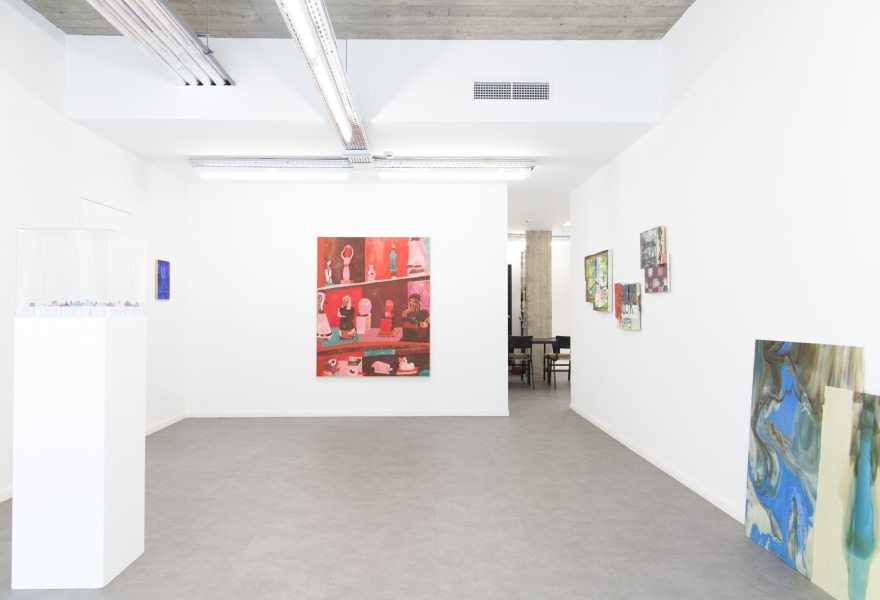21 july 2023, Flor Linckens
Pot Luck: An artsy dinner at Ballroom Gallery
Until 5 August, Ballroom Gallery in Brussels presents the group exhibition 'Pot Luck', in which the gallery brings together no fewer than 19 artists, who work in a variety of media. The name of the exhibition refers to the tradition of the pot luck, where each guest brings a homemade dish to share with others, resulting in a varied and abundant meal. It offers guests a chance to explore different flavours and cooking styles, while also opening doors for cultural exchange. And not in the least: it's also an important conversation starter.
In that sense, one can certainly draw a parallel with group exhibitions, in which artists each make a personal contribution to create a dynamic whole. Often, both expected and unexpected synergies arise between the works on display. The exhibition 'Pot Luck' thus forms a celebration of the diversity between the gallery's artists and by extension: contemporary art in a wider sense.

The exhibition shows work by Bert Huyghe, Bram De Jonghe, Fia Cielen, Geoffrey de Beer, Hilde Overbergh, Ignace Cami, Kaspar Dejong, Katleen Vinck, Lieven Segers, Lola Daels, Lucie Lanzini, Marius Ritiu, Michiel Ceulers, Nadia Naveau, Ruben Raven, Soetkin Verslype, Tramaine de Senna, Xavier Duffaut and Yorgos Maraziotis.
For his works, Lieven Segers is inspired by the everydayness of our existence. His pieces are often imbued with a humorous layer, but that is only the first and most visible layer. In an interview with Vice, the artist said: “It's never my intention to just tell a joke. There will always be a second layer that leads the viewer into a more dark or tragic world. So the joke serves more as a lubricant in that sense.”
Hilde Overbergh's practice operates on the interface between figuration and abstraction. Her use of materials varies from textile, plastic and porcelain to foam, paper and cement and she works in a variety of media: paintings, collages, sculptures, screen prints, installations and assemblages. The artist processes these materials by assembling, folding and stitching or even cutting away certain parts. Experimentation also plays a significant role in her practice and she often uses everyday found (discarded) materials for her pieces. In her studio, these materials acquire surprising new contexts and meanings, in a process in which Overbergh attempts to fathom, deconstruct and abstract our chaotic reality. She is interested in form, composition, texture and colour, but also in the physicality of her materials and objects.

Michiel Ceulers has a versatile practice in which language often plays an important role. He applies a multitude of materials — including found textiles, driftwood and Styrofoam — and he will physically assault his canvases. Next year, his work will be on display in Kunstmuseum Den Haag. In an interview with Manuela Klerkx for GalleryViewer, he stated: “The major twists and turns in painting have already been explored by the generations before me. I know I can't add something completely new. But I can be real. I can make paintings that are unvarnished, embarrassing even, but always authentic. I want to make paintings that toy with conventions or genres, that are humorous and corrupt existing rules.”
The stylised yet intuitive representations of Soetkin Verslype often have a basis in reality and are based on everyday objects, collections, photos, elements from her travels, but also specific arrangements in shop windows. She usually works in a predetermined colour scheme, unrelated to the colour of the original object. Her works are not narrative in nature and the resulting paintings have an analytic and fragmented quality, as if you're looking at an abstract puzzle, full of rhythmically ordered planes. The resulting images are playful and instantly recognisable, but at the same time they allude to something fragile. The foreground and background merge effortlessly in a kind of distorted perspective.


